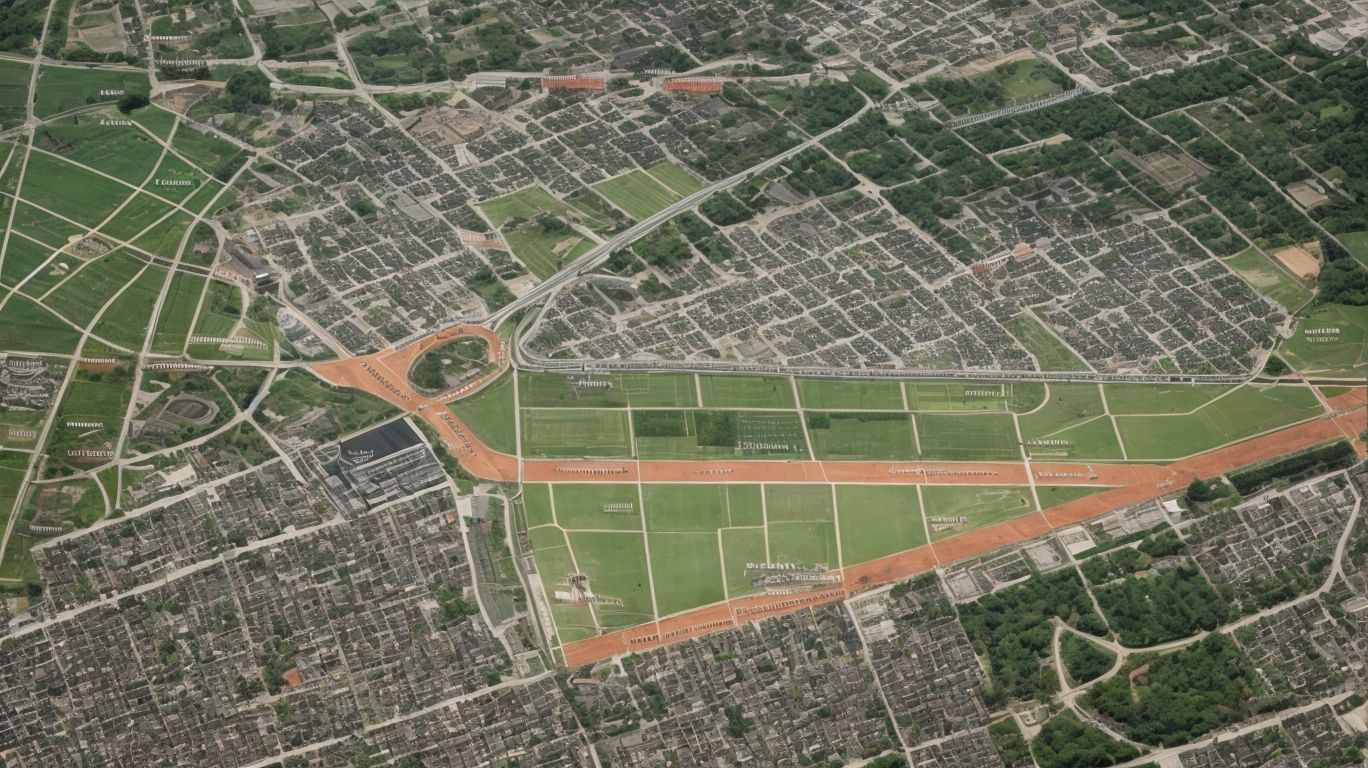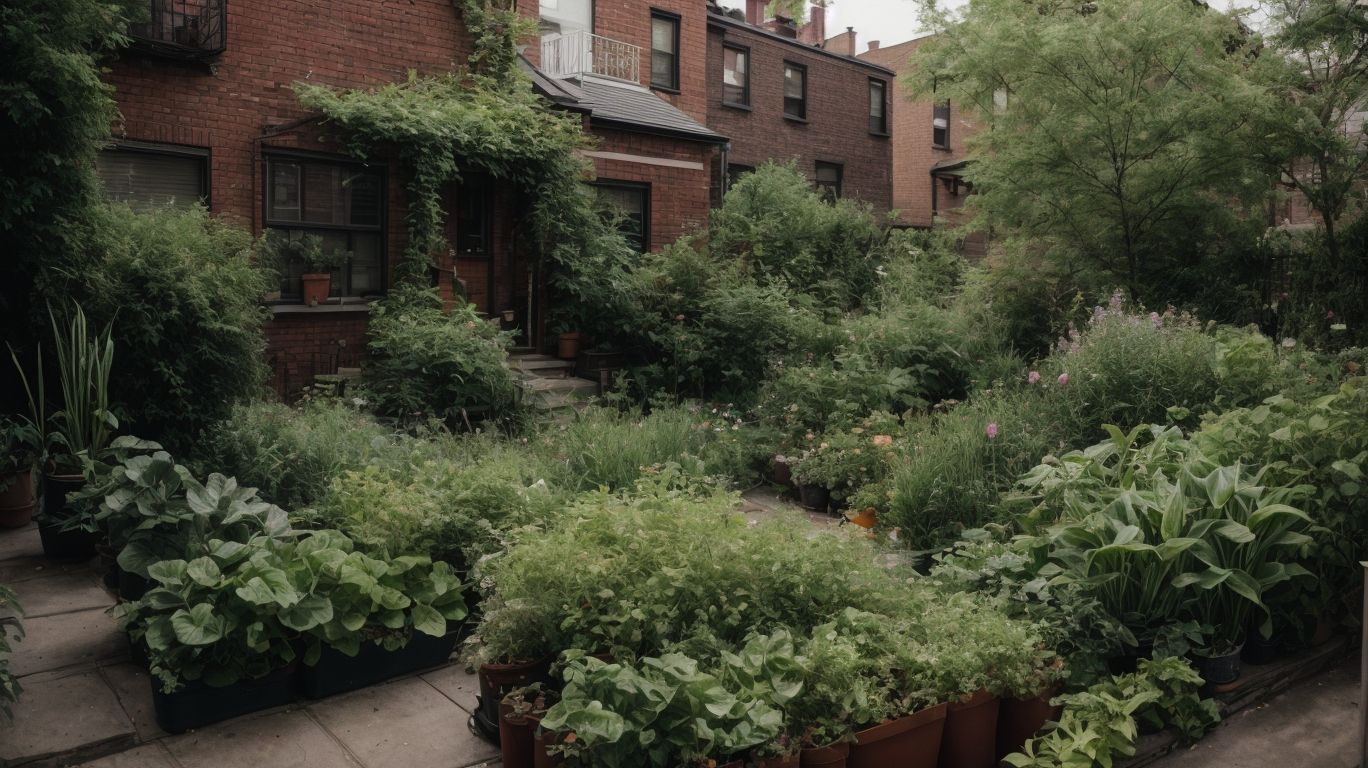The 91910 gardening zone is a unique and diverse area that offers a variety of opportunities for gardeners. Understanding the specific characteristics of this gardening zone is crucial for successful and thriving plant growth. In this article, we will delve into the significance of knowing your gardening zone, explore the average temperature and rainfall, soil composition, and the types of plants that thrive in the 91910 gardening zone. We will provide valuable insights on how to plan and maintain a garden in this territory, including the best planting times, watering and fertilizing tips, and strategies to protect plants from extreme temperatures. Whether you are a seasoned gardener or a novice green thumb, this comprehensive guide will equip you with the knowledge to make the most of your gardening endeavors in the 91910 zone.
Key Takeaways:
What is the 91910 Gardening Zone?

Credits: Monkinthegarden.Com – Joshua Thomas
The 91910 Gardening Zone, also known as the climate zone for San Diego, California, plays a crucial role in determining the suitability of plants for sustainable landscaping in the region.
Characterized by its Mediterranean climate, the 91910 gardening zone experiences mild, wet winters and warm, dry summers, making it ideal for a diverse range of plant species. This zone falls under the USDA Hardiness Zone 10a, indicating the average annual extreme minimum temperature of 30-35°F.
The carefully curated planting calendar for this zone reflects the unique climatic patterns, guiding gardeners on the optimal times for sowing, transplanting, and harvesting various crops and ornamentals. Native plants, such as California poppies, ceanothus, and manzanita, thrive in this region, promoting sustainable landscaping practices and biodiversity preservation.
Why is Knowing Your Gardening Zone Important?
Understanding your gardening zone, such as the 91910 zone for San Diego, California, is essential for selecting native plants and creating sustainable landscaping tailored to the region’s unique climatic conditions.
What are the Characteristics of the 91910 Gardening Zone?

Credits: Monkinthegarden.Com – Zachary Brown
The 91910 gardening zone in San Diego, California, is characterized by specific weather patterns, climatic parameters, and resources that form a comprehensive guide for sustainable landscaping and plant selection.
What is the Average Temperature in the 91910 Gardening Zone?
The average temperature in the 91910 gardening zone of San Diego, California, influences the types of plants that thrive in the region and serves as a vital factor in gardening and landscaping decisions.
With an average temperature range of 55-75°F, this zone offers favorable conditions for a variety of plant species. Succulents such as agave, aloes, and cacti are well-suited to the arid climate, while citrus trees, such as lemon and orange, thrive in the warm winters and hot summers. Gardeners in this zone often use drought-tolerant plants and employ water-efficient irrigation systems to address the dry conditions, promoting sustainable gardening practices. The mild climate also encourages year-round gardening, with options for both cool and warm-season crops, enabling a diverse and productive garden all year long.
What is the Average Annual Rainfall in the 91910 Gardening Zone?
The average annual rainfall in the 91910 gardening zone of San Diego, California, plays a pivotal role in shaping the local ecosystem and influencing the selection of plants suitable for sustainable landscaping.
The Mediterranean climate of this region, characterized by mild, wet winters and dry summers, necessitates a thoughtful approach to gardening and landscaping. With an average annual rainfall of around 10-13 inches, plants with drought tolerance and water efficiency are highly favored. This limited water availability can lead to the promotion of native species and xeriscaping. Understanding the seasonal patterns of rainfall becomes essential to plan gardening activities and water conservation strategies.
What is the Soil Composition in the 91910 Gardening Zone?
The soil composition in the 91910 gardening zone of San Diego, California, is a critical factor that influences the successful cultivation of native plants and the implementation of sustainable landscaping practices.
Characterized by its sandy loam texture and alkaline pH, the soil in the 91910 gardening zone provides a favorable environment for a variety of plant species, including drought-resistant succulents and resilient coastal shrubs. These natural attributes support the use of drought-tolerant landscaping techniques, reducing the need for excessive irrigation and promoting water conservation. The soil’s composition necessitates the incorporation of organic matter and soil amendments to enhance fertility, a practice central to sustainable gardening in the region.
What Types of Plants Thrive in the 91910 Gardening Zone?

Credits: Monkinthegarden.Com – Eric Walker
The 91910 gardening zone in San Diego, California, fosters the thriving growth of a diverse range of native plants, making it conducive for sustainable landscaping and community-based gardening initiatives.
What are Some Examples of Annual Plants in the 91910 Gardening Zone?
The 91910 gardening zone in San Diego, California, supports the growth of various annual plants that contribute to the vibrant ecosystem, sustainable landscaping, and community gardening efforts in the region.
Annual plants such as marigolds, zinnias, and sunflowers not only bring vibrant colors to gardens but also play a crucial role in sustaining the ecosystem. Their flowers provide nectar and pollen for bees, butterflies, and other pollinators, supporting biodiversity. These plants are often used in sustainable landscaping due to their ability to thrive with minimal water and maintenance, making them ideal for water-wise gardens. Community gardening efforts often involve the cultivation of annual plants, fostering relationships and a sense of shared responsibility for environmental stewardship.
What are Some Examples of Perennial Plants in the 91910 Gardening Zone?
Perennial plants in the 91910 gardening zone of San Diego, California, offer enduring beauty, ecological benefits, and opportunities for sustainable landscaping and community engagement.
For instance, lavender, echinacea, and salvia are resilient perennial plants that thrive in the 91910 gardening zone. These plants not only add vibrant color and texture to gardens but also attract pollinators like bees and butterflies, contributing to the local ecosystem. By choosing drought-tolerant perennials, gardeners can conserve water and create low-maintenance landscapes that align with sustainable gardening principles.
Involving the community in perennial planting projects not only fosters a sense of unity but also promotes environmental awareness and conservation.
What are Some Examples of Shrubs and Trees in the 91910 Gardening Zone?
The 91910 gardening zone in San Diego, California, offers a conducive environment for the flourishing of diverse shrubs and trees, enriching the local landscape, supporting sustainable landscaping, and fostering community green initiatives.
It is common to find Chamise, Manzanita, and California Bay thriving in this area. These shrubs not only beautify the surroundings but also play a vital role in maintaining ecological balance.
Regarding trees, the Coast Live Oak and Western Sycamore are noteworthy examples. The Coast Live Oak is particularly celebrated for its longevity and ability to provide an inviting habitat for numerous bird species.
These plants contribute to the overall aesthetics of the community and encourage sustainability by providing shade, improving air quality, and absorbing rainfall, thereby reducing the risk of flooding in urban areas.
How to Plan and Maintain a Garden in the 91910 Gardening Zone?
Planning and maintaining a garden in the 91910 gardening zone of San Diego, California, involves strategic considerations such as planting according to the local calendar, understanding the first and last frost dates, and adapting to the unique growing zones and weather patterns.
What are the Best Planting Times in the 91910 Gardening Zone?
Identifying the best planting times in the 91910 gardening zone of San Diego, California, is crucial for optimizing plant growth, adapting to local weather patterns, and ensuring garden success.
Understanding the optimal planting times for different types of plants is essential for fostering healthy growth and development. In the 91910 zone, which falls under the Mediterranean climate, the planting season typically begins in early spring and continues through the fall. This aligns with the region’s weather patterns, allowing plants to establish strong roots and flourish. By following the zone-specific instructions for planting times, gardeners can take advantage of the moderate temperatures and ample sunlight to promote robust plant growth.
What are Some Tips for Watering and Fertilizing Plants in the 91910 Gardening Zone?
Effective watering and fertilizing practices tailored to the 91910 gardening zone in San Diego, California, are essential for nurturing healthy plants, conserving water, and promoting sustainable garden management.
When caring for plants in the 91910 gardening zone, it’s important to understand the specific water and nutrient needs of the local flora.
Watering should be done deeply but infrequently to encourage strong root growth and drought resistance. Consider using drip irrigation or soaker hoses to minimize water wastage.
For fertilizing, opt for organic options such as compost, manure, or natural plant-based fertilizers to enhance soil fertility and support a thriving ecosystem.
Embracing sustainable practices not only benefits your garden but also contributes to the conservation of resources in your local community.
How to Protect Plants from Extreme Temperatures in the 91910 Gardening Zone?
Implementing measures to protect plants from extreme temperatures in the 91910 gardening zone of San Diego, California, is crucial for safeguarding garden vitality and promoting long-term plant health.
When facing scorching heat or frosty conditions, gardeners must adapt their strategies to shield their beloved flora. Embracing sustainable gardening practices such as mulching, shading, and adequate watering can be instrumental in mitigating the impact of extreme temperatures. Selecting weather-resistant plant varieties suited to the local climate and implementing proper insulation methods can fortify plant resilience. Regular monitoring of weather forecasts and cultivating an understanding of local microclimates can further aid in fine-tuning protective measures for optimal plant care.
Frequently Asked Questions
What does the term “91910 Gardening Zone” refer to?
The term “91910 Gardening Zone” refers to the specific geographic region that is designated as the ideal planting territory for various types of plants, flowers, and trees. This zone is determined based on the average low temperature in the area, which affects the overall hardiness of plants.
Why is understanding the planting territory important for gardening?
Understanding the planting territory is crucial for gardening because it helps determine which plants will thrive and which ones will struggle in a particular area. This knowledge can guide gardeners in choosing the right plants for their garden and ensure its success.
How can I find out my gardening zone?
You can easily find out your gardening zone by using a gardening zone map or by searching for your zip code followed by “gardening zone.” For example, searching “91910 gardening zone” will provide you with information about the specific zone for that area.
What are the characteristics of the 91910 gardening zone?
The 91910 gardening zone is characterized by its mild climate and warm temperatures, making it suitable for growing a variety of plants. It also experiences mild winters, which allows for a longer growing season and less risk of plant damage due to freezing temperatures.
Are there any specific plants that are best suited for the 91910 gardening zone?
Yes, there are several plants that are known to thrive in the 91910 gardening zone, including succulents, citrus trees, and various types of cacti. It is important to research and choose plants that are well-adapted to this specific zone for the best results.
Can I still grow plants that are not typically suited for the 91910 gardening zone?
While it is recommended to choose plants that are well-suited for the 91910 gardening zone, it is still possible to grow plants that are not typically found in this zone. This can be achieved through proper care and maintenance, such as using protective measures during colder seasons or creating microclimates in your garden.


